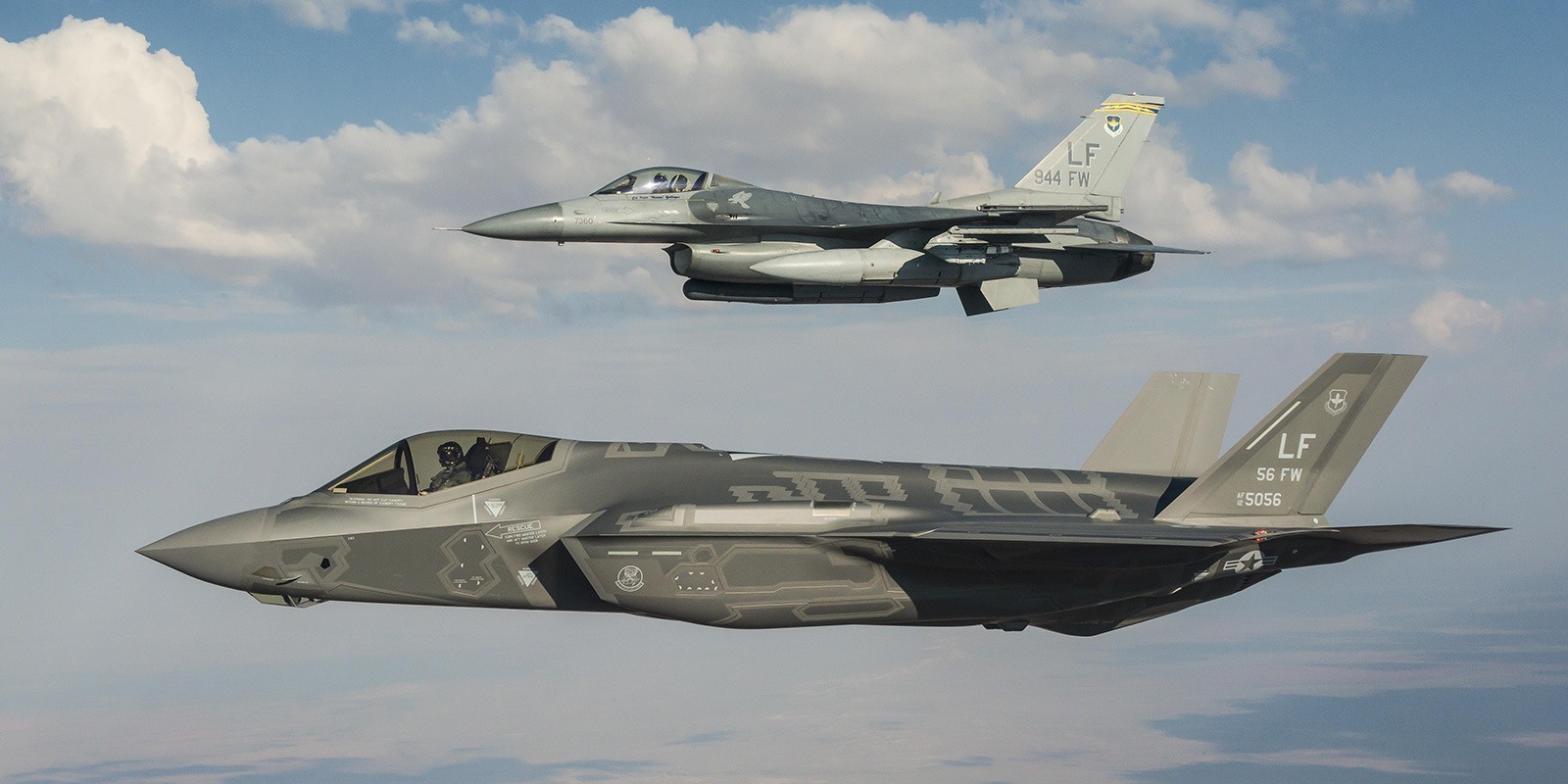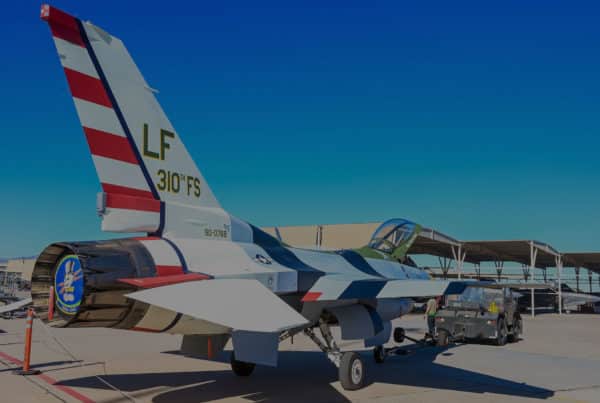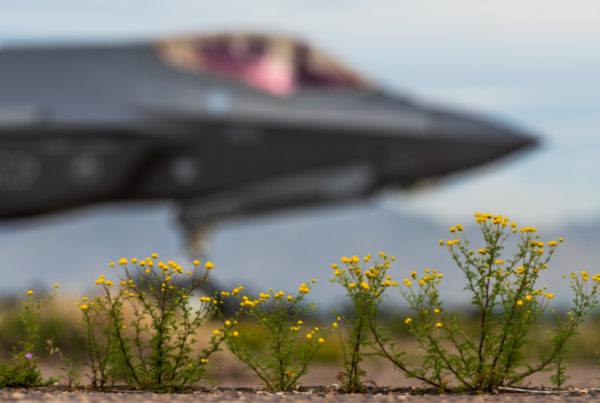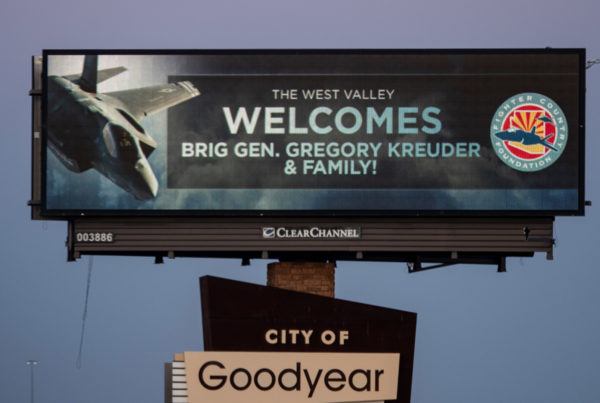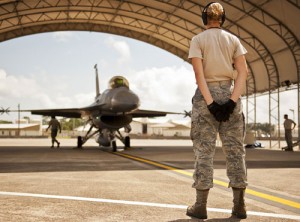
An Airman waits to give the weapons clearance to an F-16 Fighting Falcon prior to a sortie Sept. 6 at Eglin Air Force Base, Fla. Approximately 36 Luke Air Force Base Airmen, assigned to the 309th, maintain four F-16s used as chase aircraft for F-35 flights and to maintain pilot proficiency. Airmen from Luke’s various F-16 maintenance squadrons have been rotating to Eglin to support this mission since January 2011.
When the Air Force announced Luke Air Force Base, Ariz., as the next training location for F-35A Lightning IIs, maintainers temporarily assigned here began to feel like they were already in the future environment.
Since January 2011, F-16 Fighting Falcons have been on “loan” at the 33rd Fighter Wing from their Phoenix-area home.
The F-16s arrived six months in advance of the first F-35A delivery last year which helped bring a sense of operations back to the wing where the fresh paint smell was still lingering in each of the newly constructed hangars for Air Force, Navy and Marines.
Before Luke’s presence, ramp space wasn’t used to generate aircraft operations since the wing transitioned to Air Education and Training Command in October 2009. The F-16s now operate as chase aircraft for F-35 flights and to maintain pilot proficiency.
“Daily operations are pretty much the same, but just on a smaller scale,” said Master Sgt. Dana Clapp, production superintendant for approximately 36 Airmen maintaining the four jets from their base. “They prepare our aircraft for the day’s flying, which mostly consist of servicing, inspecting and documenting all maintenance on the aircraft forms and the computer into our data system.”
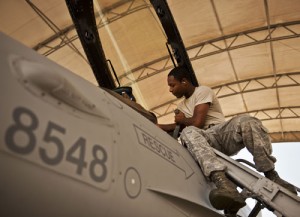
Senior Airman Dominique Wilson, a crew chief with the 309th Aircraft Maintenance Squadron, helps secure the pilot into the F-16 Fighting Falcon on the 33rd Fighter Wing flightline.
One maintainer volunteered to come to Eglin this summer for a glimpse of America’s next generation fighter at the military’s home for F-35 pilot and maintenance fighter training.
“I really wanted to see the F-35 program and get a chance to be a part of the future of the Air Force,” said Staff Sgt. Brandon Mulford, 309th Aircraft Maintenance Unit F-16 dedicated crew chief. “The support we give 33rd pilots and our sister branches to continue their operations and training makes this a unique experience. Many times you only work within your unit when supporting operations.”
The maintainer said during his 90 days here he can see his role in generating sorties as an important part of the joint strike fighter training mission.
“I am absolutely excited for the F-35 to arrive at Luke. It will be an excellent facility to train the new pilots flying the Lightning II,” said Mulford who currently is a part of AETC’s F-16 pilot and maintainer training mission team. “I believe that Luke has gained an idea of what it will take to support the duel mission of the two airframes working together on one installation.”
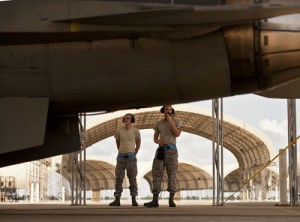
309th Aircraft Maintenance Squadron Airmen prepare an F-16 Fighting Falcon for a sortie on the 33rd Fighter Wing flightline Sept. 6 at Eglin Air Force Base.
Although he has only been in the military for eight years, the sergeant said he has experienced transferring F-16 assets to other bases around the globe during his four years at Cannon Air Force Base, N.M., and then part of an international team at Royal Air Force Lakenheath in the U.K.
“We come from multiple squadrons with a wide variety of career fields,” said Clapp. “There are crew chiefs, avionics, electricians, weapons, sheet metal, egress, metal technicians, fuel specialist and a munitions specialist as a first sergeant. We receive a lot of support from the 33rd Maintenance Group and from the other units on base. They are always asking what they can do to help.”
The superintendant said the overall impression Luke Airmen give is they enjoy their time and would gladly come back. Some have done as many as three tours to Eglin in the last year. The tour is dependent on the size of their shop and the chance to give another maintainer the experience. Their average time on temporary assignment is two months.
Mulford hopes his return will be as a student earning joint strike fighter maintenance certification as a few of his colleagues have.
“I want to be an F-35 maintainer; it would be a privilege to be a part of the airframe that will be the spearhead of the tactical aircraft world,” he said.
The maintainer said he also gets to see the local area and experience what Eglin has to offer its personnel. Prior to his arrival, Mulford only knew he was going to be part of an aircrew who provide chase aircraft. They also help ensure proficiency and airworthiness for fighter pilots who are slated to be the initial F-35 cadre at the school house on Eglin.
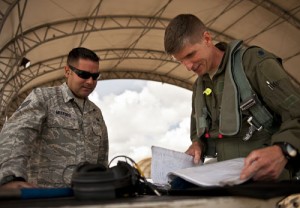
Staff Sgt. Mulford, of the 309th Aircraft Maintenance Squadron, and his aircraft’s pilot, review the maintenance record of an F-16 Fighting Falcon prior to a sortie on the 33rd Fighter Wing flightline Sept. 6.
The biggest challenge Mulford and other Arizona Airmen have experienced so far is Mother Nature.
“Working around the ever-changing weather here is different than Luke where it is almost always sunny and hot, but adapting to the environment is something maintainers are used to,” said Clapp.
What also makes working at the joint strike fighter integrated training center unique are the variety of uniforms on the 33rd FW flight line – military services, contracted logistics support and civilians.
“Partnership has been a core theme of the military’s F-35 Lightning II joint program,” said Col. Andrew Toth, 33rd FW commander. “Certainly in the experience of standing up the wing and completing the check ride myself I’ve seen the process first hand and know the importance of the team concept. Success of the program for our nation depends on our communication with each wing man on the joint strike fighter team to fly, fight and win.”
Article by Chrissy Cuttita, NWF Daily News
Sept. 14, 2012

